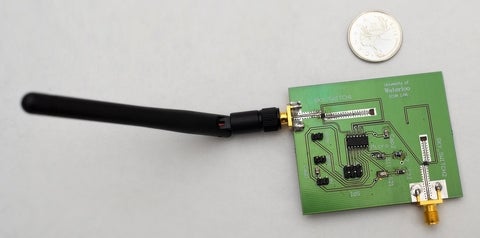Background
Battery-free wireless communication devices/sensors are highly desirable for IoT applications, such as implantable body to farm field sensor monitoring applications. Traditional battery-free systems such as RFIDs, require a specialized reader to read the tag values. The high cost and large form factor of these readers have made them difficult to deploy and have limited the adoption of RFID tags over broad areas of applications. Battery-free WiFi systems have recently been developed using backscatter technology to transmit data using existing WiFi networks. However; these systems have several problems including compatibility with existing WiFi infrastructure and inability to work with secure networks which render them impractical to work with existing WiFi networks.
Description of the invention
A new WiFi backscattering communication technology has been developed that leverages features of the 802.11 MAC layer to communicate. The invention enables standard compliant communication using modern 802.11n and 802.11ac networks with existing WiFi infrastructure and without requiring hardware or software modifications to any WiFi devices. The evaluation of the first-generation prototype (see Figure 1) shows that the communication data rate of the tag is 40 Kbps when located between a WiFi access point and a WiFi client (a laptop or cell phone) that are spaced 8 meters apart (see Figure 2).
Advantages
The invention provides:
- Achieves power consumption as low as 1.25 µW, 26x lower than the existing most energy efficient WiFi backscattering systems
- Does not require any software or hardware modifications to WiFi access points or devices
- Can work with WiFi networks that use a security protocol such as WPA
- Compatible with all modern WiFi standards
- Does not require the tag to connect to WiFi network (making them easy to deploy)
- Does not need a bridge/hub device to connect sensors to WiFi networks
- Does not interfere with WiFi communications
Potential applications
This system can be used in any application where wireless sensors are utilized. Specific IoT example applications include, smart-homes, agricultural monitoring, supply chain logistics and biometric sensors. Existing systems are typically not user-friendly (they normally need manual pairing) and are power hungry (frequent battery replacement/charging is needed).

First generation prototype

Design overview
Reference
10159 & 10203
Patent status
Patent issued
Stage of development
Prototype built and tested
Ongoing research
Contact
Scott Inwood
Director of Commercialization
Waterloo Commercialization Office
sinwood@uwaterloo.ca
uwaterloo.ca/research